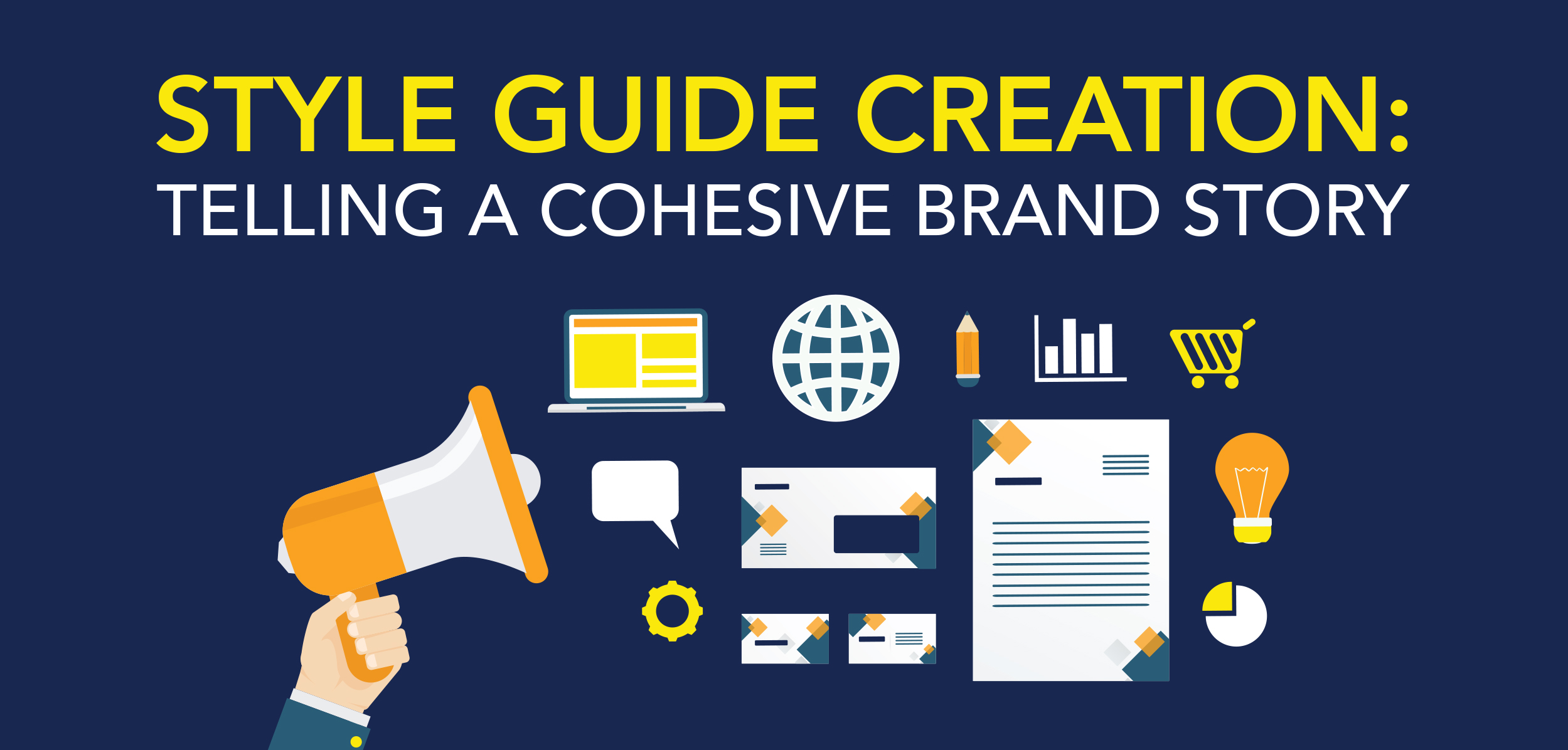
Style Guide Creation: Telling A Cohesive Brand Story
Posted on March 21, 2019
-
Category:
- Atlanta Branding
Creating a style guide, also known as a brand standards manual, helps your organization speak with one voice across all of its written content. The most effective style guides cover two types of brand identity: visual and verbal.
Visual identity
Unique design elements frame a company’s brand story in a way that’s enticing, unforgettable, and even iconic. If you’ve seen the flowing calligraphy on a can of Campbell’s soup or the rainbow feathers of the NBC peacock, you know what an iconic brand looks like. However, a brand’s visual elements include not only its logo, but also the color palette and other secondary design components that go along with it. And if all of these elements are put together in the right way, they’ll enjoy a decades-long shelf life. Andy Warhol may have popularized the half-red, half-white can design for Campbell’s as far back as the 1960s, but neither the company’s soups nor its visual branding elements are going away anytime soon.
Logos, logotypes, and taglines
The logo is the major identifying mark for a brand; it’s almost always the first branded visual element that customers will encounter. Depending on how faithfully it tells a company’s brand story, a logo may or may not need to change over time. A logotype is a word that’s displayed as part (or all) of a logo; the intricately scripted “Coca-Cola” and “Campbell’s” are both examples of logotypes. Taglines, if there are any, should appear with the logo.
Fonts and colors
It’s difficult to imagine either “Coca-Cola” or “Campbell’s” being written in anything other than calligraphy; such is the power of the right font. On the other hand, if the standard fonts or headings on a page appear in calligraphy (or in some other ornate style), they run the risk of driving customers off the site; no one appreciates having to decipher words one letter at a time. Nor should the colors of the primary fonts turn reading into a challenge. It’s always a good idea to keep web accessibility in mind when designing your organization’s website. At a minimum, the standard font colors should be readable against the background of the page.
Verbal identity
Solid standards for written communication help you build on your company’s brand story by presenting it consistently. You might interact with many stakeholders—not only current and prospective clients, but also board members, vendors, and influencers. And robust verbal brand guidelines make it easier to engage with all of those stakeholders by way of a single voice.
What to include in your style guide
Visual identity guidelines should contain:
- Logo/logotype/tagline dimensions with scale boxes to encourage consistent presentation
- Font colors, sizes, and styles (regular vs. bold vs. italic) for all major content types, i.e., headlines, subheads, and body copy
- RGB, hexadecimal, CMYK, and Pantone specifications for all colors in your brand palette, including gradients
- Visual examples of on-brand content types; it may be prudent to use an element-heavy document like a white paper as a prototype and place it at the beginning or end of the style guide for easy access
- Design elements/styles that should not be used, plus acceptable substitutes
Verbal identity guidelines should contain:
- An explanation of your company’s mission and vision; provide correct and incorrect examples of how to express it
- A list of commonly used and misused words
- Entries for basic grammar, capitalization, and punctuation; common verbal elements that are subject to house style include academic degrees, professional titles, titles of creative works, subject-verb agreement, commas vs. semicolons, bolding vs. quotation marks vs. italics, hyphenated/compound words, and lists (bulleted vs. numbered vs. in-line text)
- Standard vs. prohibited language, e.g., a description of the organization and what it offers, boilerplate disclaimers and other legally required content, examples of promotional verbiage that might be considered a false or misleading claim or inappropriate guarantee
- Style exceptions for different genres, e.g., social media vs. articles
- Before-and-after examples of off-brand vs. on-brand messaging
- Sample creative briefs that help you define target demographics, content genres, and tone of voice for each campaign component, along with ROI expectations and other salient items
- A section containing frequently asked questions about verbal and visual style requirements
- A listing of contacts who can provide answers to questions that the style guide doesn’t cover
Your verbal and visual identity guidance may be as short as a two-page tip sheet or as long as a booklet, but in either case, the effort will be worth it. Because using a single voice to tell your company’s brand story helps you build trust and ultimately maintain long-lasting relationships with your clients.
To learn more about how visual and verbal elements can help you create a cohesive brand story, please contact us.
